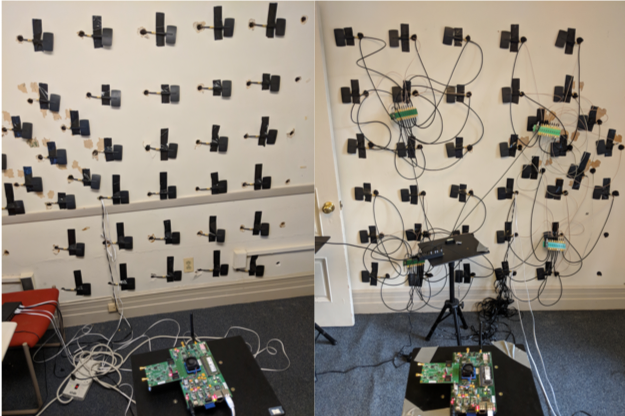 Project:Assessing the Feasibility of Programming the Ambient Wireless Environment
Project:Assessing the Feasibility of Programming the Ambient Wireless Environment
NSF Award Number:1763309
Period: May 1, 2018 to April 20, 2020
Principal Investigator: Kyle Jamieson kylej@cs.princeton.edu
Introduction: Wireless connectivity has become an indispensable utility in everyday life. Far beyond providing basic communications, wireless infrastructure comprises the backbone of the control and management functions of many Internet of Things (IoT) ecosystems, ranging from smart home solutions to autonomous vehicles. Therefore, countless efforts have been made to ensure the efficiency and reliability of such critical infrastructure. Against this backdrop, this project follows the same overarching theme of improving wireless infrastructure towards faster and seamless connectivity.
From a scientific perspective, the project seeks to investigate the feasibility of fundamentally transforming the technical approach to wireless network design by shifting the focus from the data networks themselves to the ambient environment. From an industrial perspective, the project opens the way for the contribution of techniques to both improve cellular network link quality and enable co-existence of Wi-Fi technologies in dense urban deployments, where interference limits their effectiveness. From an educational perspective, the project has the potential to change the way academia teaches the topic of wireless communications and the wireless channel to undergraduate students and graduate students alike.
The traditional approach to optimizing wireless networks revolves around the wireless endpoints, i.e., the transmitters and the receivers, and takes the wireless channel as a hard constraint, invoking a multitude of solutions to fully utilize that channel. This project will instead focus on whether it is feasible to optimize the ambient wireless environment. Instead of changing the ways in which endpoints behave, the project will explore ways of changing the perceived channel along the wireless link to create more favorable conditions for wireless communication. Specifically, the team will explore how to instrument the wireless environment with small wireless elements to effect changes in the wireless channel that a wireless receiver measures from a wireless sender. A substrate comprising these elements is then combined with a control infrastructure that measures the channels between wireless senders and receivers in real time, and actuates the element substrate in order to effect channel variations. As a proof of concept, the team will explore using this design to improve individual links as well as reduce interference between concurrent links.